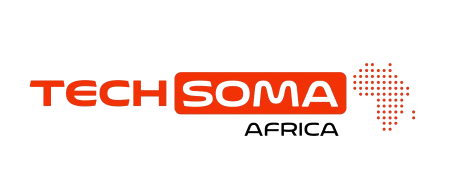Africa has launched its first-ever Child Online Protection Taskforce to shield millions of young internet users from escalating cyber risks. UNICEF and GSMA announced this initiative at MWC Kigali on October 22, 2025, creating the continent’s first multi-stakeholder platform dedicated to protecting children in the digital space. The taskforce directly responds to alarming trends showing African children coming online at one of the world’s fastest rates while facing unprecedented digital dangers.
African Children Rush Online at Record Speed
Africa hosts the world’s youngest population, with 60% under age 25, and projections show the continent will house 1 billion children by 2055. Currently, around 18% of children aged 5-7 in Sub-Saharan Africa already access mobile internet, with thousands more joining daily.
This digital surge creates both opportunity and risk. While mobile technology opens doors to education and social connection, it simultaneously exposes young users to cyberbullying, exploitation, harmful content, and misinformation. The continent’s mobile-first landscape and rapid AI advancement intensify these challenges.
“As Africa’s children step boldly into the digital world, their safety must come first,” said Etleva Kadilli, UNICEF Regional Director for Eastern and Southern Africa. The taskforce will ensure technology protects rather than harms young users while preserving their access to learning and growth opportunities.
Critical Focus Areas for Child Protection
The taskforce will address four key areas identified through extensive research and stakeholder consultation:
- Data Collection and Research: Limited regional data hampers efforts to address online harms. The taskforce will accelerate research across the continent to deepen insights at regional and national levels, tracking how digital risks evolve with technological advancement.
- Legislative and Technical Frameworks: Building on the African Union’s Child Online Safety Strategy, the taskforce will help governments adapt frameworks for emerging technologies like AI while creating local regulations suited to cultural and economic contexts.
- Digital Literacy Education: The initiative will scale online safety education programs, integrating child protection into school curricula and supporting parents’ digital literacy skills. Content in localized African languages will maximize impact across diverse communities.
- Multi-Stakeholder Collaboration: Effective collaboration between policymakers, mobile operators, regulators, and civil society organizations will drive platform safety improvements, enhanced content moderation, and real-time reporting tools.
Research Reveals Disturbing Online Abuse Patterns
Recent IPSOS research commissioned by MTN Group exposes the harsh reality facing African children online. In Nigeria, over 50% of surveyed children reported experiencing bullying or harassment, with many afraid to seek help due to fear of punishment. Facebook, WhatsApp, Twitter, Instagram, and TikTok emerged as primary platforms where harassment occurs.
South Sudan shows equally concerning trends, with unrestricted access to inappropriate content linked to heightened stress and behavioural issues among children. Zambian parents and educators highlighted urgent needs for support in navigating online safety measures.
The regional Disrupting Harm research published in 2023 found that across six Sub-Saharan African countries, 1 in 10 internet-using children experienced digital sexual abuse within a single year. These statistics underscore the critical need for immediate, coordinated action.
Major Tech Players Join Forces for Protection
The Africa Taskforce on Child Online Protection brings together an impressive coalition spanning the mobile industry, technology sector, regulatory bodies, law enforcement, and civil society. Key partners include Axian Telecom, MTN Group, Orange, Safaricom, Vodacom, INTERPOL, and the International Centre for Missing and Exploited Children.
Youth voices remain central to the initiative, with 19-year-old advocates like Jemima Kasongo from the Democratic Republic of Congo playing active roles. Kasongo, who personally experienced online violence, now coordinates the U-Report Community and works as an online fact-checker.
“The responsibility to act is ours – collectively and urgently,” Kasongo emphasized. “A safer digital future for the children of sub-Saharan Africa depends on the steps we take today.”
Building on Regional Policy Momentum
The taskforce builds directly on the GSMA’s June 2025 whitepaper “Enhancing Child Online Protection in Sub-Saharan Africa,” developed with UNICEF and regional partners. This comprehensive document called for strengthened action from governments, industry, civil society, and youth to create safer digital environments.
Africa already leads global efforts in child online protection policy. In 2024, the African Union adopted its Child Online Safety and Empowerment Strategy, making Africa the first region worldwide to implement comprehensive child digital protection policies. The Malabo Convention also includes clear provisions addressing child sexual abuse material offenses.
Industry Leaders Drive Safety Innovation
Mobile network operators across Africa have launched numerous child protection initiatives. MTN Group’s “Help Children be Children” program focuses on preventing online child abuse while empowering children with digital navigation tools. Safaricom partnered with UNICEF and the Directorate of Children Services for the “Spot it, Stop it” campaign, raising awareness about violence against children.
Orange’s “For Good Connections” initiative provides tools to protect young users from screen addiction and cyberbullying. In Mali, Orange collaborated with the Internet Society to train 20,000 children in basic online safety practices and screen time management.
Caroline Mbugua, Director of Public Policy at GSMA Africa, emphasized the shift from strategy to action: “The Taskforce marks an important step, turning whitepaper recommendations into tangible regional progress. By working alongside UNICEF, governments, industry, and youth representatives, we aim to embed safety into Africa’s digital transformation journey.”
The taskforce will strengthen digital governance while promoting safety-by-design principles, ensuring children’s voices shape policies defining Africa’s digital future. Co-funding models between public and private sectors will enhance research capabilities and expand access to vital protection portals, helplines, and digital tools.
With Africa’s youth population projected to reach 850 million by 2050, making up half the continent’s population by 2063, the stakes couldn’t be higher. The Africa Taskforce on Child Online Protection represents a critical step toward ensuring this digital generation can explore, learn, and grow in a safer online environment.
















